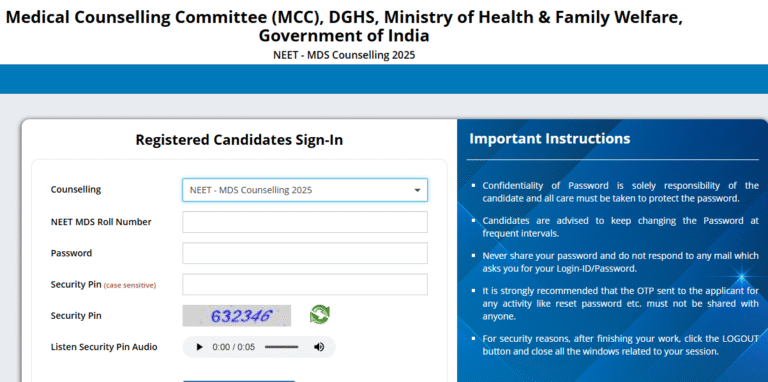Have you ever wondered why some students excel in their preparation while others struggle to keep up? The secret often lies in how they manage their time and incorporate rest into their routine. A well-structured timetable is not just about studying hard—it’s about studying smart.
Balancing intense preparation with regular breaks is crucial for maintaining focus and avoiding burnout. Short pauses help refresh the mind, improve retention, and keep energy levels high. By planning your day effectively, you can maximize productivity and stay on track toward your goals.
Let’s explore how a thoughtful schedule, including strategic breaks, can make a significant difference in your preparation journey. Together, we’ll uncover the best practices to optimize your routine and achieve success.
Understanding the Role of Breaks in NEET Preparation
How can strategic pauses transform your learning experience? Many students overlook the power of rest, but it’s a game-changer for productivity and focus. Let’s dive into why breaks are essential and how they can enhance your preparation.
The Science Behind Taking Breaks
Research shows that our minds need regular pauses to function at their best. Long hours of continuous work can lead to mental fatigue, reducing your ability to retain information. Taking breaks every 50-60 minutes can improve memory retention by up to 20%.
Short pauses help reset cognitive functions, allowing your brain to process complex topics like physics and biology more effectively. This approach not only boosts productivity but also reduces stress and anxiety.
Boosting Focus with Well-Timed Rest
Strategic breaks can break the monotony of long study sessions. For example, the Pomodoro technique suggests studying for 25 minutes followed by a 5-minute break. After four sessions, take a longer break of 15-30 minutes to recharge.
Here are some benefits of well-timed rest:
- Improved concentration and problem-solving abilities.
- Enhanced retention of syllabus content.
- Reduced physical discomfort like back pain or eye strain.
By incorporating these practices into your day, you can maintain energy levels and stay motivated throughout your preparation journey.
Designing Your Customized NEET Study Timetable
What if the key to success lies in crafting a personalized schedule? A well-structured timetable is more than just a plan—it’s a roadmap to achieving your goals. By tailoring your routine to your unique needs, you can maximize productivity and stay motivated throughout your preparation journey.
Identifying Your Peak Productivity Hours
Everyone has specific times of the day when they feel most alert and focused. For some, it’s early morning, while others thrive late at night. Identifying these peak hours can help you schedule challenging topics like physics or biology when your mind is at its sharpest.
Here’s how to find your best time:
- Track your energy levels for a week.
- Note when you feel most productive.
- Plan intensive sessions during these periods.
This approach ensures you make the most of your day.
Balancing Study Sessions with Rest Periods
Long hours of continuous work can lead to burnout. To avoid this, balance your study sessions with short breaks. For example, the Pomodoro technique suggests 25 minutes of focused work followed by a 5-minute pause. This method keeps your mind fresh and improves retention.
Here’s a sample timetable to guide you:
| Time | Activity |
|---|---|
| 6:00 AM – 8:00 AM | High-yield topics (e.g., Biology) |
| 8:00 AM – 8:30 AM | Break |
| 8:30 AM – 10:30 AM | Physics problem-solving |
| 10:30 AM – 11:00 AM | Rest |
| 11:00 AM – 1:00 PM | Chemistry revision |
Remember, flexibility is key. Adjust your plan as needed to suit your coaching schedule and personal habits.
Mastering neet study break timing
What’s the secret to staying sharp during long hours of preparation? It’s not just about working harder—it’s about working smarter. Strategic pauses can transform your routine, helping you stay focused and productive.
Determining Optimal Break Durations
How long should your pauses be? Research suggests that short breaks of 5-10 minutes after every 50-60 minutes of work are ideal. This approach keeps your mind fresh and improves retention. Longer breaks of 15-30 minutes can be taken after 2-3 hours of intense sessions.
Studies show that candidates who follow this pattern perform better in mock tests and real exams. It’s a simple yet effective way to maintain energy levels and avoid burnout.
Scheduling Frequent Short Breaks Effectively
Frequent pauses are key to maintaining focus. For example, the Pomodoro Technique recommends 25 minutes of work followed by a 5-minute break. After four cycles, take a longer pause. This method helps you stay consistent and productive.
Here’s how to integrate breaks into your timetable:
- Plan short pauses after every session.
- Use longer breaks to recharge during intense periods.
- Experiment to find the intervals that work best for you.
By following these guidelines, you can create a routine that supports your goals. For more tips on effective time management, explore our detailed guide.
Integrating Breaks with Subject-Based Study Sessions
How can you align your pauses with the demands of different subjects? Each topic requires a unique approach to maximize retention and focus. By tailoring your breaks to the complexity of the material, you can enhance your learning experience.
Tailoring Breaks for Chemistry, Physics, and Biology
Chemistry often involves problem-solving and memorization. Short, frequent pauses can help you process complex reactions and formulas. For example, take a 5-minute break after every 25 minutes of focused work.
Physics requires logical thinking and application. Longer study sessions with brief pauses can help maintain focus. Try a 10-minute break after every 50 minutes of practice.
Biology is information-heavy. Frequent breaks can prevent mental fatigue. Use breaks to review key points or jot down notes for better retention.
Here’s a sample timetable to integrate breaks effectively:
| Time | Activity |
|---|---|
| 9:00 AM – 10:30 AM | Chemistry (Problem-solving) |
| 10:30 AM – 10:45 AM | Break |
| 10:45 AM – 12:15 PM | Physics (Theory and Practice) |
| 12:15 PM – 12:30 PM | Break |
| 12:30 PM – 2:00 PM | Biology (Revision and Notes) |
Customize your plan based on your strengths and weaknesses. Adjust break lengths to suit the complexity of each subject. This approach ensures you stay focused and productive throughout your preparation.
Strategies for Effective Time Management and Rest
What’s the best way to balance intense learning with relaxation? Achieving success requires more than just hard work—it demands smart planning and strategic pauses. By blending focused sessions with adequate rest, you can maintain energy levels and avoid burnout.
Incorporating Rest into a Rigorous Study Schedule
Long hours of continuous work can lead to fatigue and reduced productivity. To stay sharp, integrate short breaks into your daily routine. For example, the Pomodoro Technique suggests 25 minutes of focused work followed by a 5-minute pause. This method keeps your mind fresh and improves retention.
Here’s how to balance your schedule effectively:
- Plan breaks after every session to recharge.
- Use longer pauses for meals or physical activity.
- Adapt your timetable to include revision and self-assessment.
Many successful aspirants follow a structured plan that includes coaching sessions and planned breaks. This approach ensures they stay on track while maintaining their health and focus.
Sample Daily Schedule
| Time | Activity |
|---|---|
| 7:00 AM – 9:00 AM | High-yield topics (e.g., Biology) |
| 9:00 AM – 9:15 AM | Break |
| 9:15 AM – 11:15 AM | Physics problem-solving |
| 11:15 AM – 11:30 AM | Rest |
| 11:30 AM – 1:30 PM | Chemistry revision |
Customize your plan based on your strengths and weaknesses. Adjust break lengths to suit the complexity of each subject. This approach ensures you stay focused and productive throughout your preparation.
Real-Life NEET Study Break Experiences and Topper Insights
What can we learn from those who’ve already achieved success? Real-life examples of top performers provide valuable lessons on how to manage time, incorporate rest, and stay focused. Let’s dive into the routines and strategies of successful aspirants to uncover what works best.
Case Study: A NEET Topper’s Daily Routine
Sumit Nahak, a NEET topper, credits his success to a well-structured timetable. His day began at 6:00 AM with a focus on high-yield topics like biology. He followed the Pomodoro technique, studying for 25 minutes and taking a 5-minute break. This method kept his mind fresh and improved retention.
Sumit’s routine included:
- Morning sessions for challenging subjects like physics and chemistry.
- Afternoon slots for revision and mock tests.
- Evening breaks for yoga and meditation to reduce stress.
By balancing intense sessions with regular pauses, Sumit maintained his energy and focus throughout the day.
Key Lessons from Successful NEET Aspirants
Top performers emphasize the importance of strategic breaks. They use these moments for quick revisions, note-making, and mental resets. Here are some key takeaways:
- Plan short pauses after every session to recharge.
- Use longer breaks for physical activity or relaxation.
- Incorporate mock tests to simulate exam conditions.
These practices not only improve performance but also build confidence for the actual exam. By learning from their experiences, we can create routines that support our goals and lead to success.
Adapting Your Timetable for Different NEET Scenarios
How can you adjust your routine to fit different preparation scenarios? Every aspirant has unique daily commitments, and tailoring your schedule to match these is crucial for success. Whether you’re attending school or dedicating full days to preparation, a flexible plan can make all the difference.
For Students Attending Regular School
Balancing school hours with preparation requires careful planning. Start by identifying free slots in your day, such as early mornings or evenings. Use these periods for focused sessions on high-yield topics like biology or chemistry.
Integrate short pauses to maintain focus. For example, study for 50 minutes and take a 10-minute break. This approach keeps your mind fresh and improves retention. Here’s a sample timetable for school-goers:
| Time | Activity |
|---|---|
| 6:00 AM – 7:30 AM | Biology revision |
| 7:30 AM – 7:45 AM | Break |
| 4:00 PM – 5:30 PM | Physics problem-solving |
| 5:30 PM – 5:45 PM | Rest |
| 8:00 PM – 9:30 PM | Chemistry practice |
For Droppers and Holiday Study Plans
Full-time aspirants have more flexibility but need structure to stay productive. Divide your day into focused sessions with regular breaks. For example, study for 2 hours, take a 15-minute pause, and repeat. This method ensures consistent progress.
Use holidays to intensify your preparation. Allocate specific hours for mock tests and revision. Here’s a sample plan for droppers:
| Time | Activity |
|---|---|
| 8:00 AM – 10:00 AM | Physics theory |
| 10:00 AM – 10:15 AM | Break |
| 10:15 AM – 12:15 PM | Chemistry practice |
| 12:15 PM – 1:00 PM | Lunch and rest |
| 1:00 PM – 3:00 PM | Biology revision |
Customize your plan based on your strengths and weaknesses. Experiment with different intervals to find what works best for you. A well-structured timetable ensures you stay on track and achieve your goals.
Conclusion
What makes a well-structured routine the cornerstone of success? Throughout this article, we’ve explored how balancing preparation with rest can transform your journey. From understanding the science behind pauses to learning from top performers, the key lies in personalization and discipline.
By tailoring your timetable to fit your unique needs, you can optimize your time and stay focused. Incorporating mock tests and regular revision ensures you’re well-prepared for the challenges ahead. Small adjustments, like planning breaks or revisiting key concepts, can make a significant difference.
For more insights on strategic study plans and effective time management, explore our detailed guides. Remember, success is not just about hard work—it’s about working smart and staying consistent.





